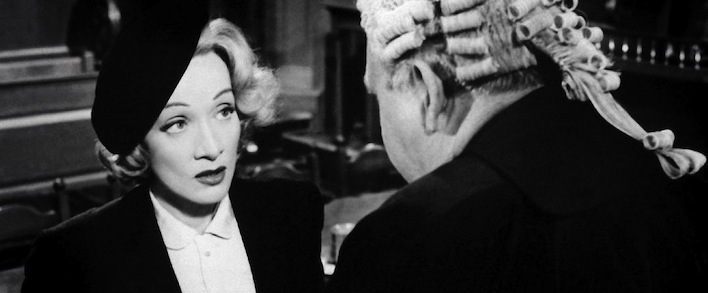Law and Justice on TV. The Wire vs. CSI and Ally McBeal
Abstract
The aim of this paper is to analyse the ways in which law is represented in the celebrated TV series The Wire, broadcasted in United States between 2002 and 2008. The analysis focuses particularly on the thematization of the relationship between the concept of law and that of justice, that is between 'positive law' and 'natural law'. This theme is pursued in the context of American television series of great success such as CSI: Crime Scene Investigation (CBS, 2000-) and Ally McBeal (Fox, 1997-2002) . The comparison highlights the way in which in The Wire the terms of the problem are completely eroded through the representation of a sort of 'disappearance of justice'. In this series the natural law becomes insignificant both because it is no more the point of reference of the actions activated by the institutions, and because an informed, in-depth and not prejudicial gaze on the social reality of the contemporary metropolis brings into question the very idea of a justice absolute and distanced from the contingent circumstances.
Downloads
References
Adamo, Sergia - Bertoni, Clotilde (eds.), Between Literature and Law: On Voice and Voicelessness, num. monografico di Compar(a)ison, an international Journal of Comparative Literature, 2007.
Alvarez, Rafael, The Wire: Truth to Be Told, Canongate Books, Edimburgh, 2009.
Anthony, Andrew, “No need to Pathologise...”, Reading CSI. Crime TV Under the Microscope, Ed. Michael Allen , I.B. Tauris, London, 2007: 33-35.
Asimow, Michael, Lawyers in Your Living Room!: Law on Television, American Bar Association, Chicago, IL, 2009.
Creeber, Glen, “CSI”, The Television Genre Book, Eds. Creeber, Glen - Miller, Toby - Tulloch, John, PalgraveMacmillian, 2008.
Dolin, Kieran, A critical introduction to Law and Literature, Cambridge University Press, Cambridge, 2007.
Erickson, Hal, “Ally McBeal”, Encyclopedia of Television Law Shows. Factual and Fictional Series about Judges, Lawyers and the Courtroom, 1948-2008, Ed. Erickson, Hal, McFarland, Jefferson, 2009.
Grignaffini, Giorgio, I generi televisivi, Carocci, Roma, 2004.
Hornby, Nick, “David Simon. Creator-Writer-Producer of HBO's The Wire”, Believer, 5:7 (2007).
Izzo, Donatella, “Crime Scene Do Not Cross: i limiti della giustizia in CSI”, Ácoma, 36 (2008).
Jameson, Fredric, “Realism and Utopia in The Wire”, Criticism, 52:3-4 (2010):359-72.
Id., Postmodernismo, ovvero la logica culturale del tardo capitalismo, Fazi, Roma, 2007.
Kamir, Orit, “Why ‘Law-and-Film’ and What Does it Actually Mean? A Perspective”,Continuum: Journal of Media & Cultural Studies, 19:2 (2005): 255-278.
Loi, Marina, “Ally McBeal”, Cult Series (Vol. I),Ed. Franco Monteleone, Dino Audino Editore, Roma, 2005.
Love, Chris, “Greek Gods in Baltimore: Greek Tragedy and The Wire”, Criticism, 52:3-4 (2010): 487-507.
Mezey, Naomi - Niles, Mark C., Screening the Law: Ideology and Law in American Popolar Culture, Georgetown Law Faculty Publications, 2010.
Nelson, Robin, “Ally McBeal”, The Television Genre Book, Eds. Glen Creeber – Toby Miller – John Tulloch , PalgraveMacmillian, 2008.
Posner, Richard A., Law and Literature, Harvard University Press, London, 2009.
Potter, Tiffany - Marshall, C.W. (eds), The Wire: Urban Decay and American Television, New York, Continuum, 2009.
Rose, Brian G., “The Wire”, The Essential HBO Reader, Ed. Edgerton, Gary R. - Jones, Jeffrey P., The University Press of Kentuky, Lexington, 2008: 82-91.
Simon, David, Homicide. A Year on the Killink Streets, Houghton Mifflin, Boston, 1991.
Id. - Burns, Edward, The Corner: A Year in the Life of an Inner-City Neighborhood, Broadway, New York, 1997.
Stark, Steven D., “Perry Mason Meets Sonny Crockett: The History of Lawyers and Police as Television Heroes”, University of Miami Law Review, 42:1, 1987: 229–284.
Talbot, Margaret, “Stealing Life. The Crusaders Behind The Wire”, New Yorker, October 22, 2007.
Turnbull, Sue, “The Hook and the Look. CSI and the Aesthetics of the Television Crime Series”, Reading CSI. Crime TV Under the Microscope, Ed. Allen, Michael, I.B. Tauris, London, 2007: 15-32.
Copyright Notice
You are free to copy, distribute and transmit the work, and to adapt the work. You must attribute the work in the manner specified by the author or licensor (but not in any way that suggests that they endorse you or your use of the work).









